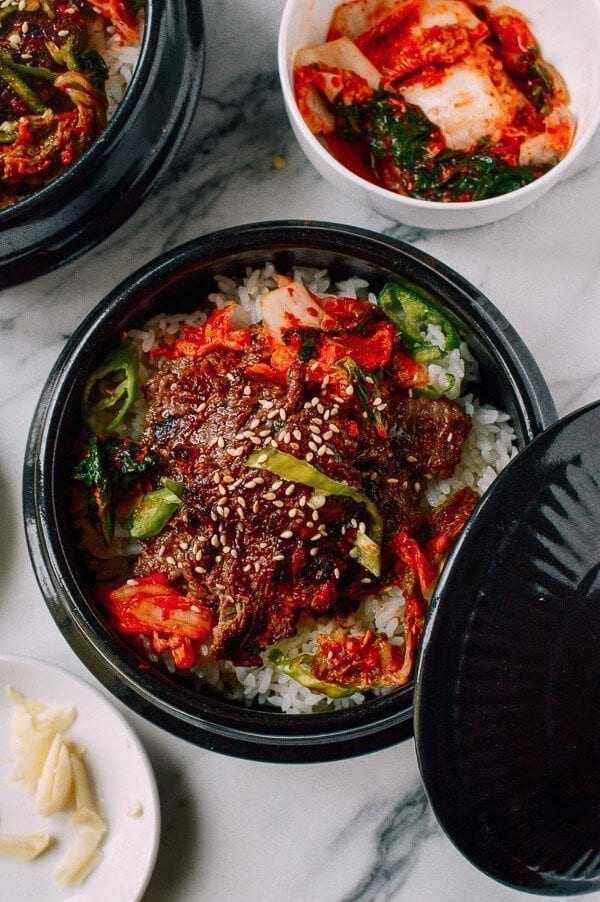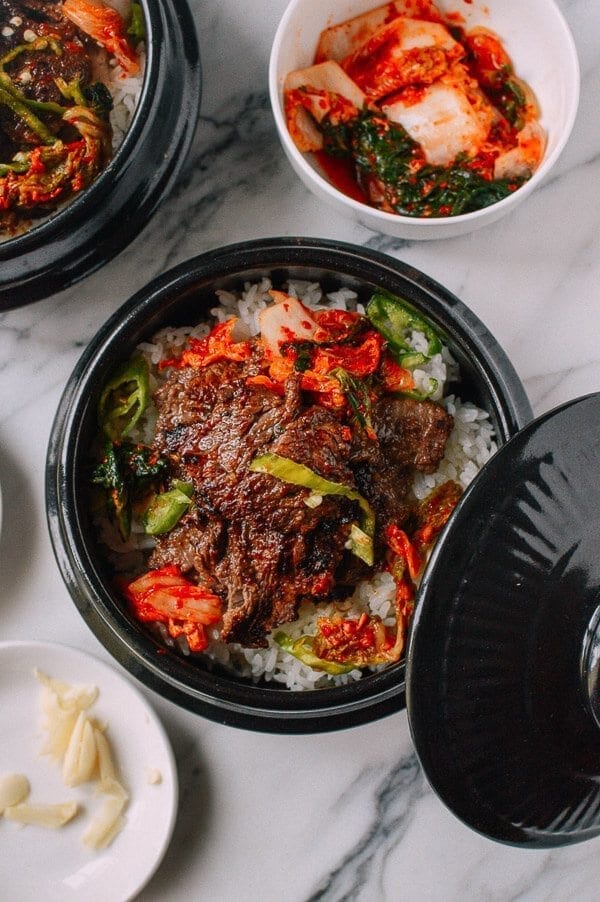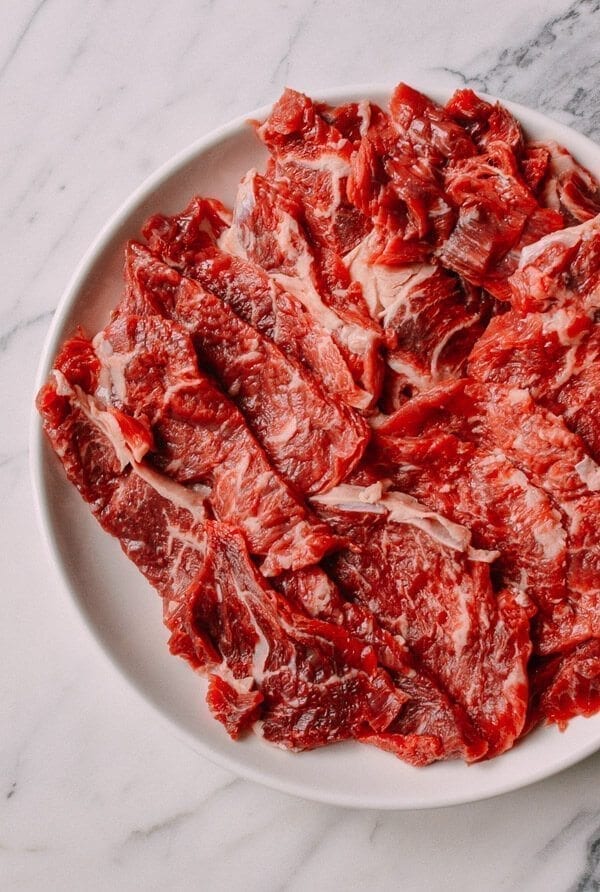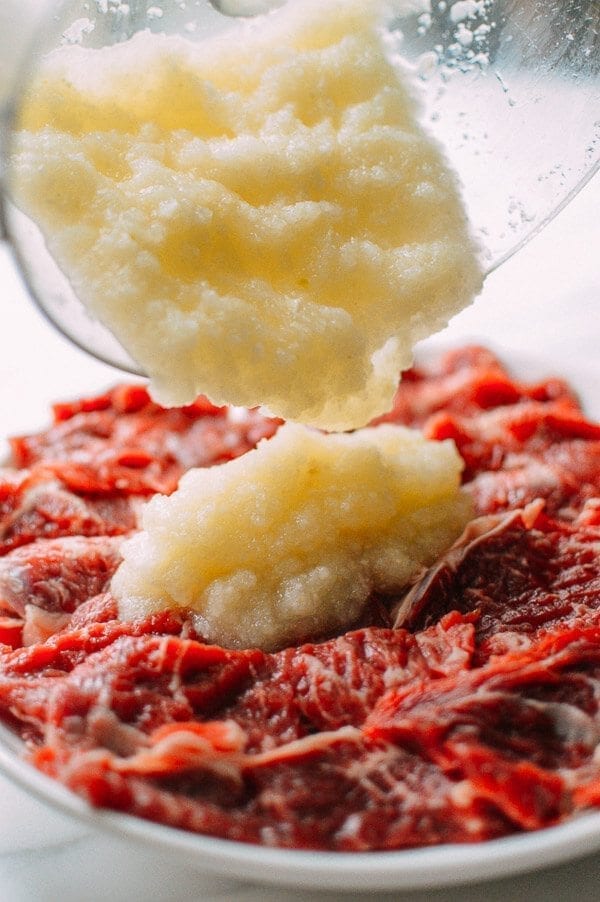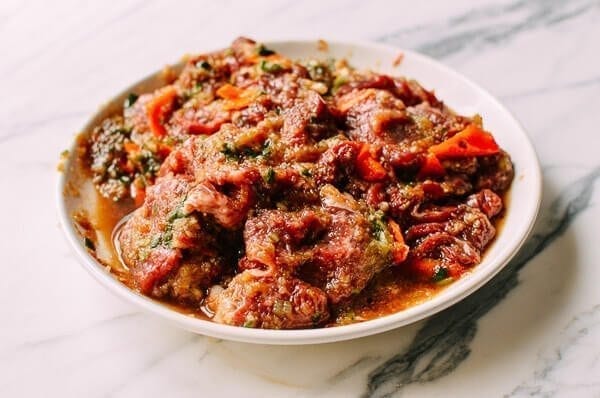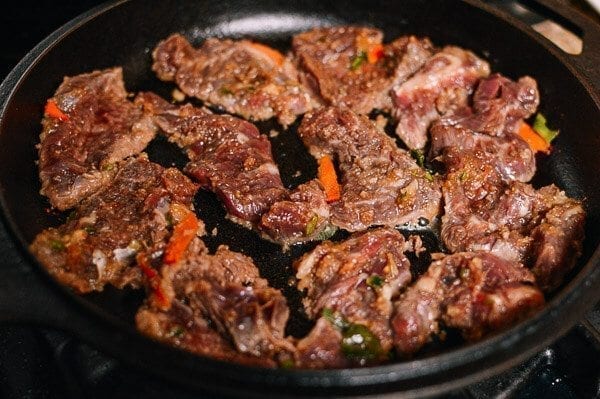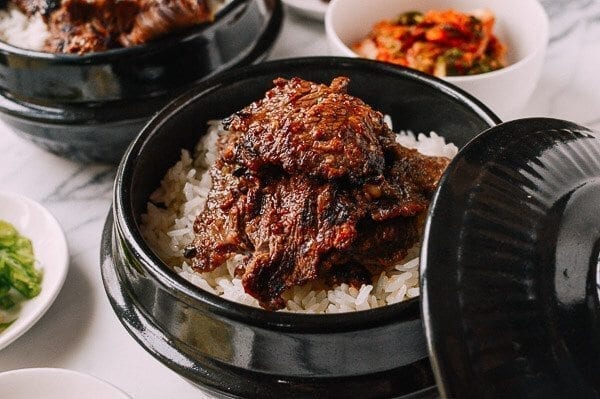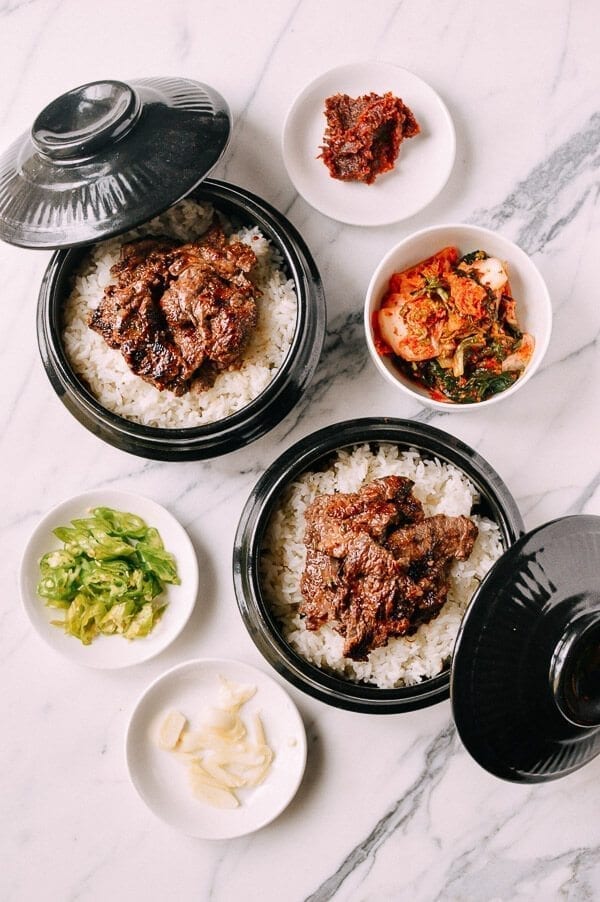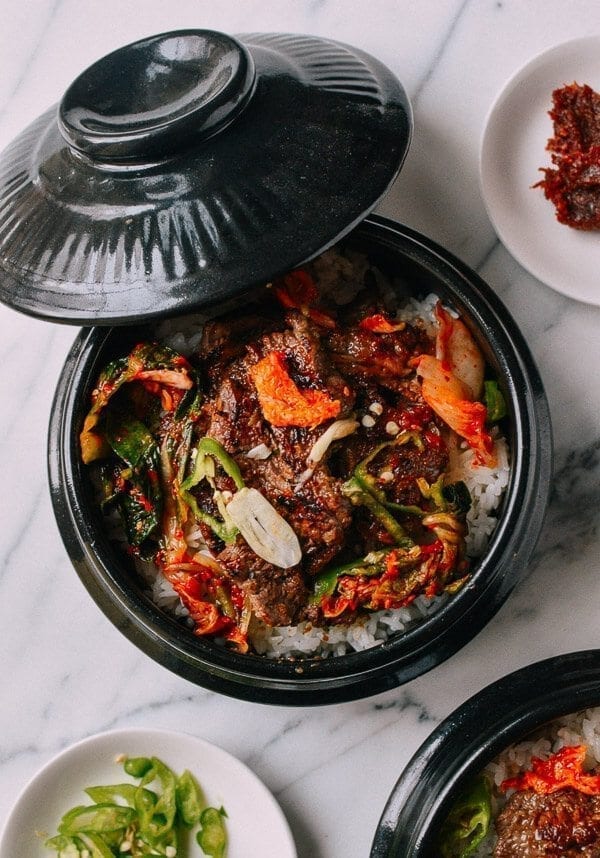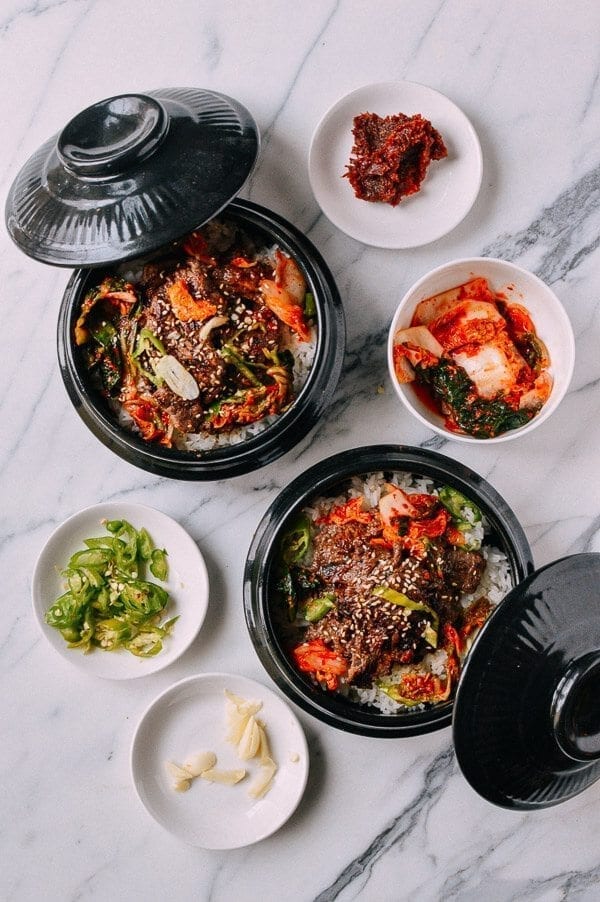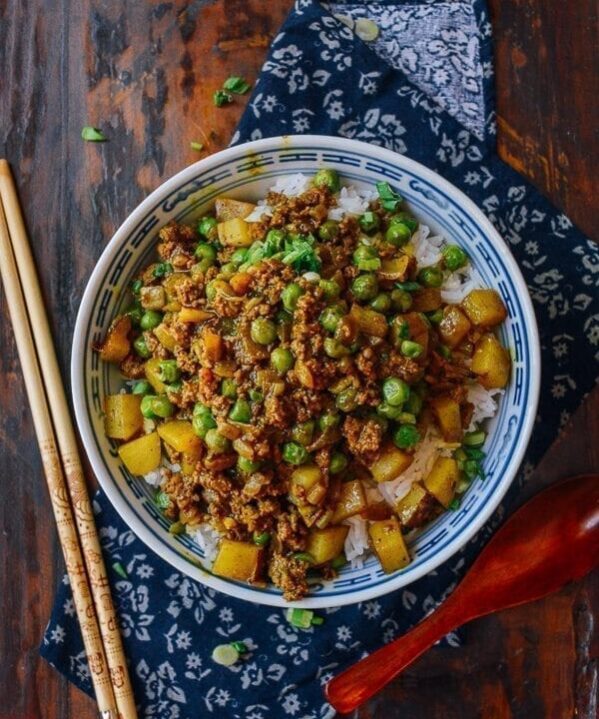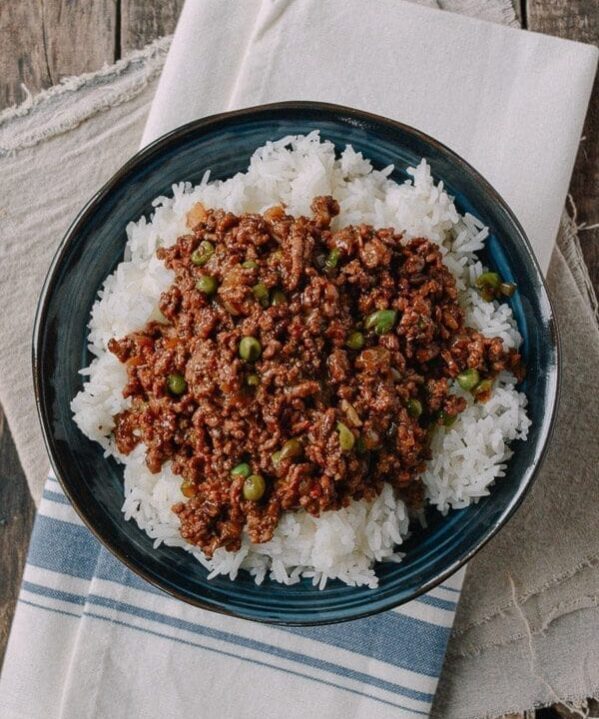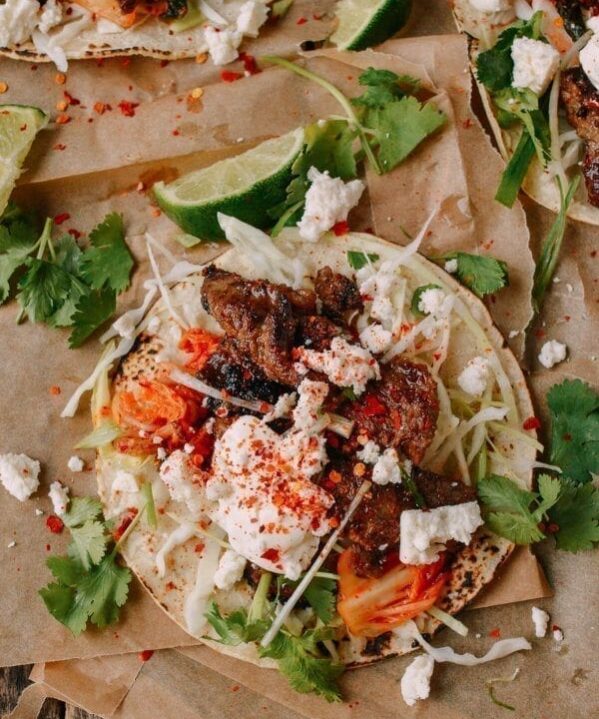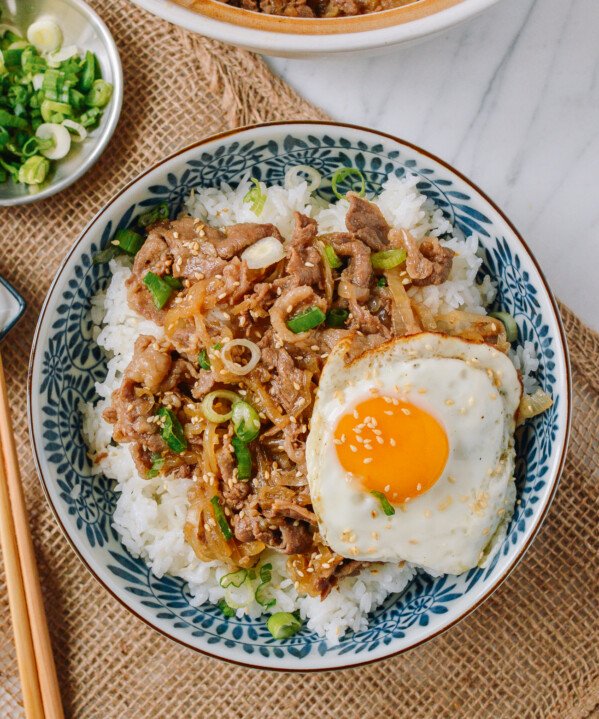Recently, “bowl” recipes have become a rather Big Deal. It’s hard to turn somewhere without seeing healthy salad bowls, rice bowls, quinoa bowls—heck any sprinkling of ingredients will do, as long as they are in a BOWL.
Well, I decided to throw together these delicious beef bulgogi bowls, which are topped with juicy, tasty pieces of bulgogi—i.e., STEAK—and plenty of delicious Korean add-ins. What you end up with is something less fussy than bibimbap and a little less traditional than bulgogi served with lettuce leaves.
For this recipe, I followed Maangchi’s recipe for the much-loved beef bulgogi, almost exactly. I made a few adjustments for quantities to make it easier to measure out, but this is a really easy recipe and probably one of her most popular ones. If you’re ever looking for great Korean recipes, Maangchi is pretty much our only and most trusted source!
When you’re digging into the fluffy white rice and flavorful slices of bulgogi, finished off with the much-needed zing of kimchi, peppers, raw garlic, and that awesome crack-like ssamjang sauce, it’ll all be gone before you can say “bulgogi.”
And a PSA, in case it wasn’t already obvious: this isn’t really a romantic dinner for two what with the kimchi and garlic breath and the steak bits in your teeth! Whether or not it will inspire love where before there was none is another story, however!
Beef Bulgogi Bowls: Recipe Instructions
Slice the beef and transfer to a mixing bowl or deep plate.
Next, prepare the marinade by adding the pear, onion, 4 cloves garlic, ginger, soy sauce, brown sugar, black pepper, and sesame oil to a food processor or blender.
Blend until you have a smooth purée. Pour the marinade over the beef, topping the whole mixture with half of your chopped scallions and all of the sliced carrot. Stir thoroughly and let marinade for at least an hour, preferably overnight.
When the beef is done marinating, heat a cast iron skillet over high heat. The beef will cook in about 3 batches; Use 2 tablespoons of oil per batch.
When the cast iron skillet is searing hot, lay pieces of beef in one layer to cover the pan. Let fry until crisped and caramelized, then flip and let fry again. The whole process takes 1-2 minutes per batch. Transfer to a plate.
You’ll probably have to scrape the pan in between batches, as the marinade crusts up the pan. Be sure to reheat the pan between batches!
When all the beef bulgogi is cooked, assemble the bowls. Add a generous heap of steamed rice to each bowl (this recipe serves 4-6 people).
Top with the beef bulgogi, kimchi, garlic, Shishito peppers, and your reserved chopped scallions. Serve with additional kimchi on the side and ssamjang paste to taste (just shmear a little of this on the beef as you eat it). You can also sprinkle with toasted sesame seeds, if using.
Enjoy this beef bulgogi bowl guys!
Beef Bulgogi Bowls, A Korean Favorite
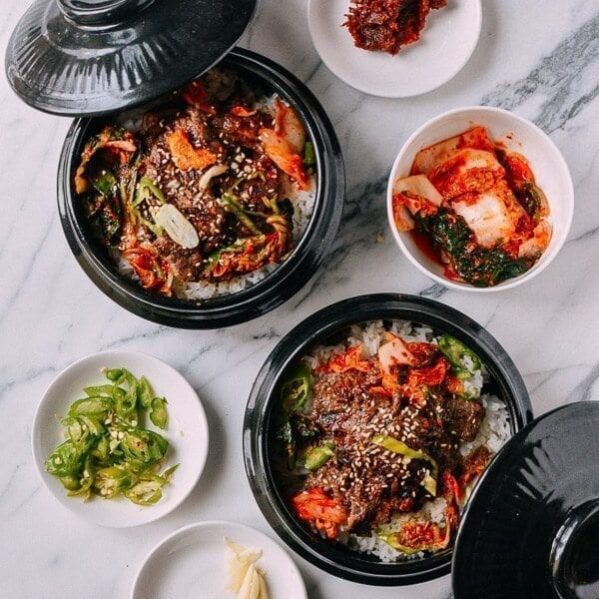
Ingredients
- 1 1/2 pounds beef (any tender cut like tenderloin or top sirloin. We used a sirloin cut labeled "beef for bulgogi" from a Korean grocery store.)
- 1/2 large Korean pear (can sub 1 small Chinese pear or 1 small regular pear)
- 1/2 of a small onion
- 4 cloves garlic
- 1 inch piece ginger
- 2½ tablespoons soy sauce
- 2 tablespoons brown sugar
- 1/8 teaspoon black pepper
- 1 tablespoon sesame oil
- 2 scallions (chopped, divided)
- 1/2 of a carrot (sliced thinly)
- 6 tablespoons oil (any preferred oil with a high smoke point)
- 5 cups steamed medium grain rice (to serve)
- 1/2 cup Kimchi (to serve)
- 3 cloves garlic (thinly sliced)
- 3 Shishito peppers (thinly sliced)
- 2 tablespoons Ssamjang paste (or to taste)
- 1 tablespoon toasted sesame seeds (optional)
Instructions
- Slice the beef and transfer to a mixing bowl or deep plate. Next, prepare the marinade by adding the pear, onion, 4 cloves garlic, ginger, soy sauce, brown sugar, black pepper, and sesame oil to a food processor or blender. Blend until you have a smooth purée. Pour the marinade over the beef, topping the whole mixture with half of your chopped scallions and all of the sliced carrot. Stir thoroughly and let marinade for at least an hour, preferably overnight.
- When the beef is done marinating, heat a cast iron skillet over high heat. The beef will cook in about 3 batches; Use 2 tablespoons of oil per batch.
- When the cast iron skillet is searing hot, lay pieces of beef in one layer to cover the pan. Let fry until crisped and caramelized, then flip and let fry again. The whole process takes 1-2 minutes per batch. Transfer to a plate. You'll probably have to scrape the pan in between batches, as the marinade crusts up the pan. Be sure to reheat the pan between batches!
- When all the bulgogi is cooked, assemble the bowls. Add a generous heap of rice to each bowl (this recipe serves 4-6 people). Top with the bulgogi, kimchi, garlic, Shishito peppers, and your reserved chopped scallions. Serve with additional kimchi on the side and ssamjang paste to taste (just shmear a little of this on the beef as you eat it). You can also sprinkle toasted sesame seeds over the top, if using. Enjoy this one guys!
